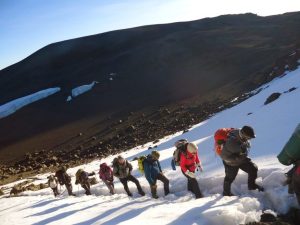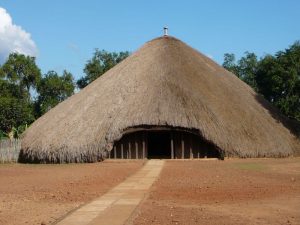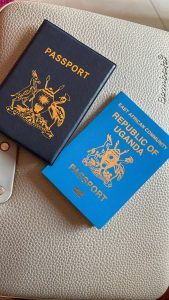Why is the Masai Mara considered a bucket list safari destination?
The Masai Mara National Reserve in Kenya ranks among the world’s most iconic safari destinations. It spans about 1,510 square kilometers of open savannahs, acacia woodlands, and riverine forests. The reserve borders Tanzania’s Serengeti National Park, forming one of the largest ecosystems for wildlife on Earth. Tourists visit the Masai Mara to witness extraordinary wildlife spectacles, including the Great Migration and sightings of the Big Five. The park also offers cultural interactions with the Maasai community, luxury safari lodges, and unforgettable photographic opportunities, making it a true bucket list experience. Bucket List Things to Do in the Masai Mara
What is the Great Migration in the Masai Mara?
The Great Migration is one of the world’s most famous wildlife events. Each year, more than 1.5 million wildebeests, 200,000 zebras, and thousands of gazelles migrate from Tanzania’s Serengeti into Kenya’s Masai Mara in search of fresh grazing land. This dramatic event typically occurs between July and October. Visitors witness river crossings at the Mara River, where crocodiles lie in wait and predators such as lions and cheetahs hunt the herds. The Great Migration attracts photographers, filmmakers, and travelers from around the globe, making it one of the top reasons the Masai Mara belongs on every safari bucket list.
Can you go on a hot air balloon safari in the Masai Mara?
A hot air balloon safari in the Masai Mara offers one of the most breathtaking perspectives of the savannah. Balloons lift off at dawn, providing aerial views of grazing wildlife, rivers, and rolling plains. Visitors often spot elephants, giraffes, and herds of wildebeests from above. The experience concludes with a champagne breakfast in the bush, adding a touch of luxury to the adventure. Due to its unique view and serene atmosphere, balloon safaris are a must-do activity for travelers seeking unforgettable experiences in the Masai Mara.
What wildlife can you see on game drives in the Masai Mara?
Game drives remain the most popular activity in the Masai Mara. The reserve is home to over 95 mammal species and 570 bird species, ensuring incredible diversity. Visitors can spot the Big Five—lion, leopard, elephant, buffalo, and rhino—alongside cheetahs, giraffes, hippos, and hyenas. Morning and evening game drives provide the best opportunities for wildlife viewing. Guides use their expertise to track animals and explain the ecosystem. The Masai Mara’s rich wildlife density makes game drives an essential bucket list experience for any safari enthusiast.
How unique is a walking safari in the Masai Mara?
Walking safaris in the Masai Mara allow visitors to explore the bush on foot under the guidance of armed rangers and professional guides. This activity provides a deeper connection with nature, as travelers observe plants, tracks, and smaller animals often missed during game drives. Walking safaris also offer thrilling encounters with wildlife from a safe distance. They allow participants to appreciate the ecosystem’s details and learn about survival techniques used by local communities. For travelers seeking adventure and authenticity, walking safaris in the Masai Mara are an unforgettable experience.
Can you experience cultural visits with the Maasai people?
Yes, cultural visits to Maasai villages enrich the safari experience by offering insight into one of Africa’s most iconic communities. The Maasai people are semi-nomadic pastoralists known for their traditional attire, beadwork, and warrior heritage. Visitors can participate in guided village tours, watch traditional dances, and learn about Maasai customs. These cultural experiences highlight the strong relationship between people and nature in the region. They also support community tourism initiatives, which contribute to local development and conservation efforts.
What makes a sunrise or sunset safari special in the Masai Mara?
Sunrise and sunset safaris provide magical moments when the golden light enhances the beauty of the Masai Mara landscape. Early morning drives often reveal predators returning from hunts and herbivores starting their day. Sunset drives allow visitors to observe wildlife during cooler hours and capture stunning photographs of the savannah bathed in warm light. These experiences combine spectacular scenery with intimate wildlife encounters, making them a highlight for many safari-goers.
Are photographic safaris popular in the Masai Mara?
Photographic safaris are highly popular in the Masai Mara due to the abundance of wildlife and breathtaking landscapes. Many tour operators offer specialized packages led by professional wildlife photographers. These safaris focus on capturing perfect shots of hunting lions, dramatic river crossings, and close-ups of elephants and giraffes. The reserve’s open plains and diverse habitats provide excellent lighting and visibility, making it one of the best safari destinations for photography enthusiasts worldwide.
Can you do horseback safaris in the Masai Mara?
Yes, horseback safaris in the Masai Mara offer adventurous travelers a unique way to explore the wilderness. Riding across the savannah allows visitors to approach wildlife without disturbing them, as animals view horses as part of the landscape. Horseback safaris often take place outside the main reserve in conservancies, ensuring privacy and exclusivity. This activity suits experienced riders and provides a thrilling alternative to traditional game drives.
Is camping in the Masai Mara allowed?
Camping in the Masai Mara is allowed in both public and private campsites. Options range from budget-friendly tented camps to luxury mobile safari camps. Camping brings visitors closer to nature, with sounds of roaring lions and laughing hyenas filling the night. Many travelers choose mobile camping safaris that move with the Great Migration, ensuring proximity to wildlife action. Camping experiences vary from rustic to high-end, catering to different preferences and budgets.
What birdwatching opportunities are available in the Masai Mara?
The Masai Mara is a paradise for birdwatchers, with more than 570 bird species recorded. Visitors can spot raptors such as martial eagles, vultures, and bateleurs, as well as colorful species like lilac-breasted rollers, secretary birds, and crowned cranes. The reserve’s rivers and wetlands attract water birds, including herons, storks, and kingfishers. Birdwatching safaris often combine with game drives, offering diverse wildlife encounters. Bird enthusiasts consider the Masai Mara one of East Africa’s top birding destinations.
Can you do night game drives in the Masai Mara?
Night game drives are permitted in conservancies bordering the main reserve rather than inside the reserve itself. These drives reveal nocturnal wildlife such as bush babies, aardvarks, genets, and hunting predators. Using spotlights, guides help visitors witness behaviors not visible during the day. Night drives provide a thrilling addition to the safari experience, offering a different perspective on the Masai Mara ecosystem.
How does the Masai Mara connect with the Serengeti in Tanzania?
The Masai Mara and Serengeti share the same ecosystem, creating a continuous wilderness that supports the Great Migration. Wildebeests and other herbivores move freely between the two parks, depending on seasonal rainfall and grazing availability. Tourists often combine safaris in both destinations, crossing the Kenya-Tanzania border to maximize wildlife experiences. This connection makes the Masai Mara a vital part of East Africa’s safari circuit.
What luxury safari experiences can you have in the Masai Mara?
The Masai Mara offers luxury experiences through exclusive lodges, private conservancies, and customized safari packages. Luxury lodges provide elegant accommodations, fine dining, spa treatments, and personalized game drives. Private conservancies ensure exclusivity, low tourist density, and off-road driving privileges. Travelers seeking comfort and intimacy find the Masai Mara’s luxury safaris among the finest in Africa.
Can families with children enjoy safaris in the Masai Mara?
Families with children can enjoy safaris in the Masai Mara, with many lodges offering family-friendly accommodations and activities. Specialized guides organize child-friendly game drives, educational bush walks, and cultural experiences. Safety measures ensure that children remain comfortable and engaged throughout the safari. Family safaris allow children to learn about wildlife and conservation in an exciting and interactive environment.
What conservation experiences are available in the Masai Mara?
Conservation experiences in the Masai Mara include visits to conservancies, community projects, and wildlife monitoring initiatives. Tourists can participate in programs supporting anti-poaching efforts, habitat restoration, and cultural preservation. By engaging in these activities, visitors contribute to sustainable tourism and the protection of wildlife populations. Conservation experiences add depth to a safari and emphasize the importance of preserving the Masai Mara for future generations.
How long should you spend in the Masai Mara for a safari?
Travel experts recommend spending at least three to four days in the Masai Mara. This duration allows visitors to enjoy multiple game drives, witness different wildlife behaviors, and possibly see the Great Migration. Longer stays provide opportunities to explore conservancies, experience cultural visits, and enjoy diverse activities such as balloon safaris. Time spent in the reserve ensures travelers fully appreciate its richness and diversity.
What is the best time to visit the Masai Mara?
The best time to visit the Masai Mara depends on the experience travelers seek. From July to October, visitors witness the Great Migration, making it the busiest season. The dry season (December to February) offers excellent wildlife viewing as animals gather near water sources. The wet season (March to May) provides lush landscapes, fewer crowds, and great birdwatching opportunities. Each season has unique advantages, making the Masai Mara a year-round destination.
How much does a Masai Mara safari cost?
The cost of a Masai Mara safari depends on accommodation type, length of stay, and activities chosen. Budget safaris start at around $150–$250 per day, while mid-range safaris cost between $350–$600 per day. Luxury safaris often exceed $800 per day, including premium lodges and exclusive services. Costs also vary depending on whether travelers choose group tours, private safaris, or fly-in packages.
Why should the Masai Mara be on every traveler’s bucket list?
The Masai Mara belongs on every traveler’s bucket list because it offers unparalleled wildlife encounters, stunning landscapes, and cultural richness. From witnessing the Great Migration to flying in hot air balloons, the reserve delivers once-in-a-lifetime experiences. Its accessibility, variety of accommodations, and connection to the Serengeti enhance its appeal. For anyone seeking the ultimate African safari, the Masai Mara remains an unmatched destination.




